DNSSEC visualization
- Zones
- Delegations
- RRsets
- Negative Responses
- DNSKEY RRs
- DS RRs
- NSEC/NSEC3 RRs
- RRSIGs
- Wildcards
- Node Status
- Warnings and Errors
Zones
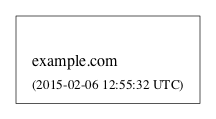
| Nodes in DNSViz are clustered by the zone to which the represented information belongs. Each zone is labeled with the name of the zone origin and the time at which the zone was last analyzed. |
Delegations
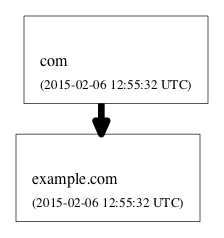 | Thick lines between zones denote delegations of namespace from one zone to another, as indicated by the presence of NS (name server) resource records (RRs) for the delegated namespace. In this example, the black, solid line indicates a standard, insecure delegation (i.e., sans DNSSEC). Other possible delegation statuses are described in the following entries. |
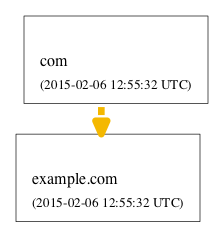 | If the designated name servers for a zone cannot not be properly resolved or if the servers do not properly respond to queries, then the delegation is considered lame and is represented by a dashed, yellow line. |
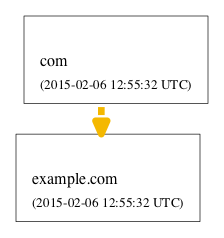 | If the delegation is incomplete, as indicated by the presence of NS records in the zone itself but not in its parent zone, then the delegation is represented by a dashed, yellow line. |
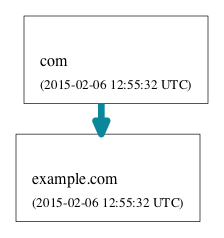 | If the delegation is secure by DNSSEC standards, then then the delegation is represented by a solid, blue line. |
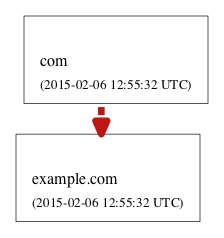 | If the delegation is bogus by DNSSEC standards, then then the delegation is represented by a dashed, red line. |
RRsets
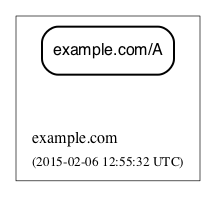 | Resource record sets (RRsets) returned in the response (usually in the answer section) are represented as rectangular nodes with rounded corners. Among the most common record types are SOA (start of authority), A (IPv4 address), AAAA (IPv6 address), MX (mail exchange), and CNAME (canonical name). RRsets that are specific to DNSSEC, such as the DNSKEY, DS, RRSIG, NSEC and NSEC3 RR types, are represented as other node types, as specified elsewhere in this guide. |
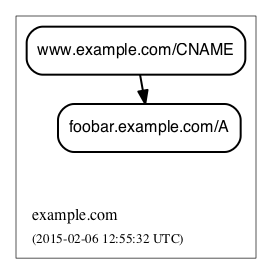 | Aliases resulting from CNAME RRs are represented by a black edge from one RRset (with the alias name) to another (with the canonical name). |
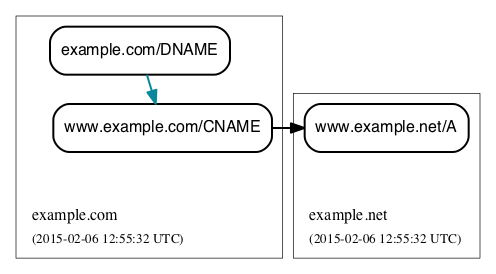 | A DNAME RR is used to alias an entire namespace into another. DNAME responses include synthesized CNAME RRs for the aliasing directed by the DNAME RR. DNAME records are shown in DNSViz with their respective CNAME records. A solid, blue line between DNAME node and CNAME node indicates that the DNAME expansion was valid. |
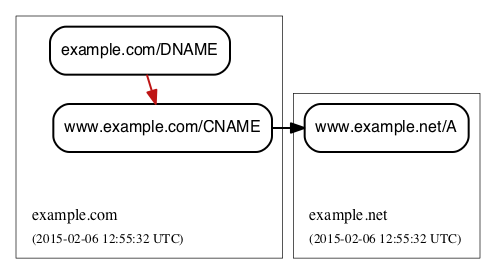 | A solid, red line between DNAME node and CNAME node indicates that the DNAME expansion was invalid. |
Negative Responses
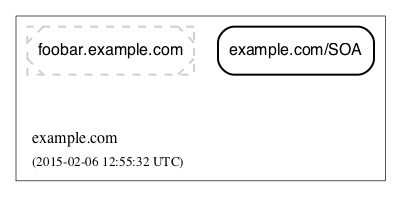 |
If the response to a query is a name error (NXDOMAIN), this negative response is represented by a rectangular node with diagonals drawn at each corner, and with a dashed border, lighter in color. A node representing the SOA RR returned in the negative response (if any) is also included. |
 |
If the response to a query has a NOERROR status but contains no answer data (NO DATA) for the type, this negative response is represented by a rectangular node with rounded corners, and with a dashed border, lighter in color. A node representing the SOA RR returned in the negative response (if any) is also included. |
DNSKEY RRs
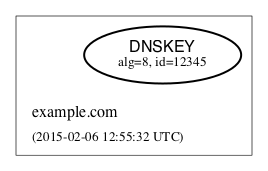 | DNSKEY RRs include public key and meta information to enable resolvers to validate signatures made by the corresponding private keys. In DNSViz, each DNSKEY RR is represented as an elliptical node in the zone to which it belongs. The DNSKEY RR for the example.com zone has algorithm 8 (RSA/SHA-256) and key tag 12345, both of are used to identify the DNSKEY. Each DNSKEY node is decorated based on the attributes of the corresponding DNSKEY RR, as described in the following entries. |
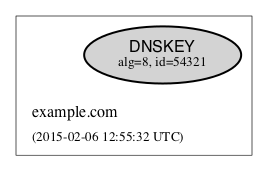 | A gray fill indicates that the Secure Entry Point (SEP) bit is set in the flags field of the DNSKEY RR. This bit is typically used to designate a DNSKEY for usage as a key signing key (KSK), a DNSKEY that is used to sign the DNSKEY RRset of a zone, providing a secure entry point into a zone via DS RRs or a trust anchor at the resolver. |
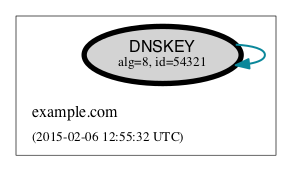 | A thick border indicates that the revoke bit is set in the flags field of the DNSKEY RR. Resolvers which implement the trust anchor rollover procedures documented in RFC 5011 recognize the revoke bit as a signal that the DNSKEY should no longer be used as a trust anchor by the resolver. For a DNSKEY to be properly revoked, it must also be self-signing (i.e., used to sign the DNSKEY RRset), which proves that the revocation was made by a party that has access to the private key. |
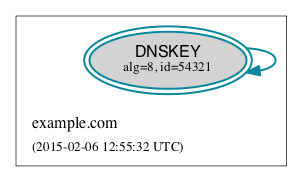 | A double border indicates that the DNSKEY has been designated as a trust anchor. By default DNSViz uses the the KSK for the root zone as the exclusive trust anchor (the KSK for Internet Systems Consortium's (ISC) DNSSEC Look-aside Validation (DLV) registry is also currently included but will be going away in the near future). This anchor may be de-selected, and/or any arbitrary DNSKEYs may be configured as trust anchors in the free-form options field. A trust anchor must be self-signing (i.e., used to sign the DNSKEY RRset). |
DS RRs
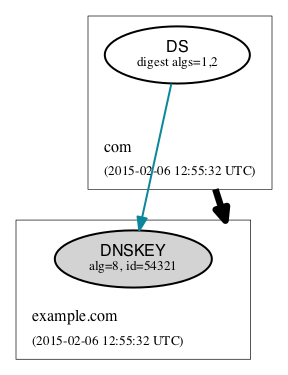
| DS (delegation signer) RRs exist in the parent of a signed zone to establish a SEP into the zone. Each DS RR specifies an algorithm and key tag corresponding to a DNSKEY RR in the signed zone and includes a cryptographic hash of that DNSKEY RR. In DNSViz DS RRs with the same DNSKEY algorithm and key tag are typically displayed as a single node since they usually correspond to the same DNSKEY RR with different digest algorithms. The DS for example.com has algorithm 8 and key tag 12345, and maps to the corresponding DNSKEY RR with digest algorithms 1 (SHA1) and 2 (SHA-256). In this example, the blue color of the arrow pointing from DS to DNSKEY indicates that the digest contained in each of the DS RRs is valid, and corresponds to an existing DNSKEY in example.com. However, other circumstances may exist, which are shown in the following entries. |
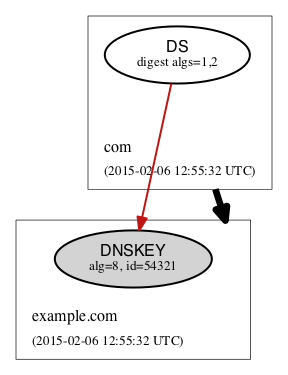 | A solid red line from DS to DNSKEY indicates that a DNSKEY exists matching the algorithm and key tag of the DS RR, but the digest of the DNSKEY in the DS RR does not match. |
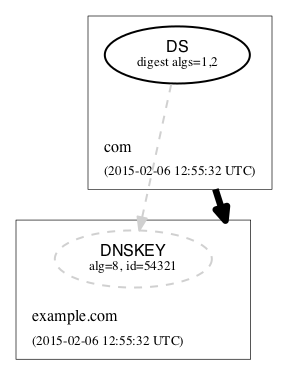 | A dashed gray line from DS to a DNSKEY with a dashed gray border indicates that no DNSKEY matching the algorithm and key tag of the DS RR exists in the child zone. Extraneous DS RRs in a parent zone do not, in and of themselves, constitute an error. For example, sometimes they are deliberately pre-published before their corresponding DNSKEYs, as part of a key rollover. However, for every DNSSEC algorithm in the DS RRset for the child zone, a matching DNSKEY must be used to sign the DNSKEY RRset in the child zone, as per RFC 4035. |
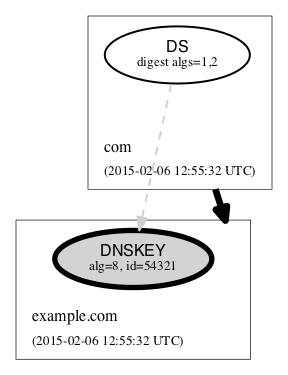 | A special case of a DS with no matching DNSKEY is when the DS matched a DNSKEY prior to its revocation, but the ramifications are the same as if it didn't match any DNSKEY. The line is simply drawn to help identify the cause of the otherwise non-existent DNSKEY. In the example at the left the key tag of the DS records isn't actually 54321; rather, 54321 is the new key tag resulting from having set the revoke bit in the DNSKEY RR. |
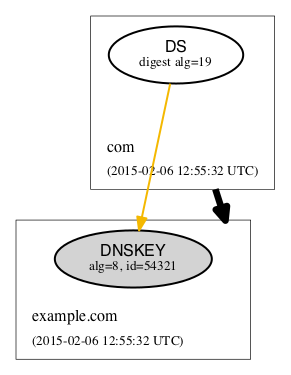 | When the algorithm and key tag of a DS RR match those of a DNSKEY RR, but the digest algorithm is unknown or unsupported, then the line between DS and DNSKEY is yellow. In the example at the left digest algorithm 19 is unknown. |
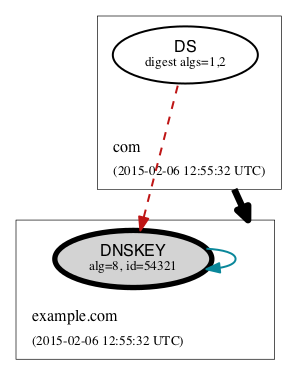 | When the use of a DS corresponding to a DNSKEY is invalid, independent of the correctness of its digest, the line between DS and DNSKEY is red and dashed. An example scenario is when the DNSKEY has the revoke bit set, which is disallowed by RFC 5011. |
NSEC/NSEC3 RRs
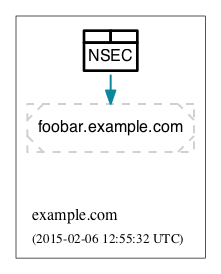
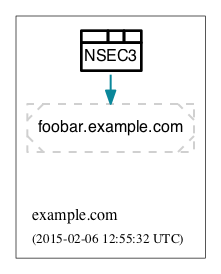 |
NSEC and NSEC3 RRs are used within DNSSEC to prove the legitimacy of a negative response (i.e., NXDOMAIN or NO DATA) using authenticated denial of existence or hashed authenticated denial of existence, respectively. In DNSViz the NSEC or NSEC3 RR(s) returned by a server to authenticate a negative response are represented by a rectangular node with several compartments. The bottom compartment is labeled with either NSEC or NSEC3, depending on the type of record. Each compartment on the top row represents an NSEC or NSEC3 record in the set--there will be between one and three. |
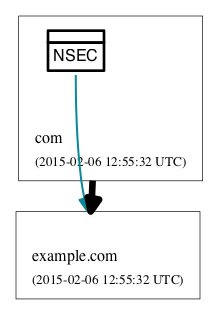 | A special case of NSEC/NSEC3 RRs is that in which they serve to prove the non-existence of Delegation Signer (DS) records. The proof of absence of DS records constitutes an insecure delegation, in which any trust at the parent zone does not propagate to the child zone. The NSEC/NSEC3 proof involving DS records is graphically represented with an edge from the NSEC/NSEC3 node to the box representing the child zone. |
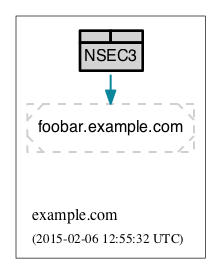 | The opt-out flag is set in NSEC3 RRs to indicate that their presence is only sufficient to prove insecure delegations (i.e., lack of DS records) and nothing more. Thus, a name error (NXDOMAIN) response, for example, cannot be securely proven when the NSEC3 uses opt-out. NSEC3 records with the opt-out flag set are colored with a gray background. |
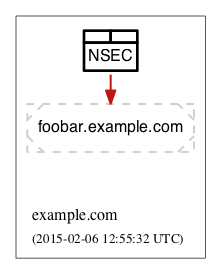 | A solid red edge from the NSEC or NSEC3 node to the negative response indicates that the NSEC or NSEC3 RRs included in in the response do not prove the validity of the negative response. |
RRSIGs
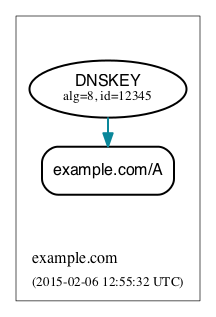 | Each RRSIG RR contains the cryptographic signature made by a DNSKEY over an RRset. Using the DNSKEY with the same algorithm and key tag as the RRSIG, the RRset which was signed, and the RRSIG itself, a resolver may determine the correctness of the signature and authenticate the RRset. In DNSViz RRSIGs are represented as directed edges from the DNSKEY that made the signature to the RRset that was signed. The edges in the example denote RRSIGs made by the example.com DNSKEY with algorithm 8 and key tag 12345, which cover the example.com/A RRset. |
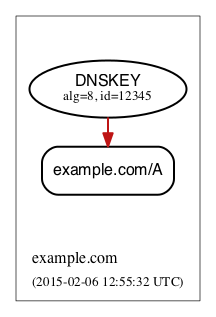 | A solid red edge indicates an RRSIG in which the cryptographic signature is invalid. |
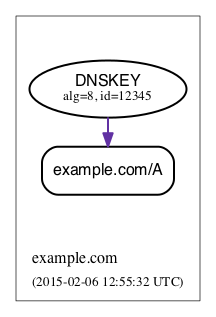 | A solid purple edge indicates that an RRSIG is invalid because it is outside its validity period, as defined by the inception and expiration date fields in the RRSIG RR. |
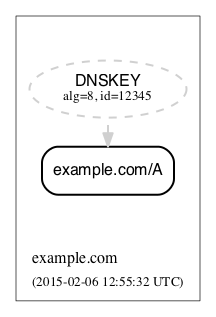 | A dashed gray line stemming from a DNSKEY with a dashed gray border indicates that no DNSKEY matching the algorithm and key tag of the RRSIG RR could be found in the DNSKEY RRset (or the DNSKEY RRset could not be retrieved). Extraneous RRSIG RRs do not, in and of themselves, constitute an error. For example, sometimes they are deliberately pre-published before their corresponding DNSKEYs, as part of an algorithm rollover. However, every RRset must be covered by RRSIGs for every algorithm in the DNSKEY RRset, as per RFC 4035. |
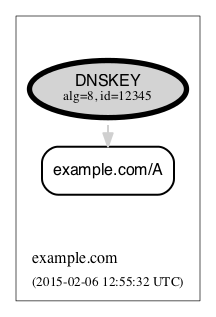 | A special case of an RRSIG with no matching DNSKEY is when the RRSIG matched a DNSKEY prior to its revocation, but the ramifications are the same as if it didn't match any DNSKEY. The line is simply drawn to help identify the cause of the otherwise non-existent DNSKEY. In the example at the left the key tag of the RRSIG RR isn't actually 12345; rather, 12345 is the new key tag resulting from having set the revoke bit in the DNSKEY RR. |
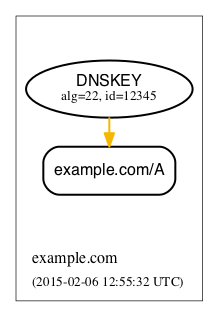 | When the algorithm and key tag of an RRSIG RR match those of a DNSKEY RR, but the cryptographic algorithm associated with the RRSIG is unknown or unsupported, then the line stemming from the DNSKEY is yellow. In the example at the left algorithm 22 is unknown. |
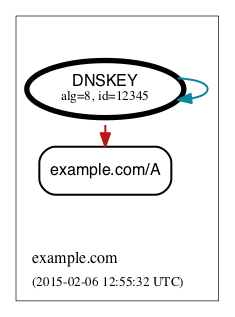 | When an RRSIG is invalid, independent of the correctness of its temporal validity period and its cryptographic signature, the line stemming from the DNSKEY is red and dashed. Example scenarios might be when the DNSKEY has the revoke bit set or when the signer field in the RRSIG RR does not match the name of the zone apex. Such scenarios are disallowed by RFCs 5011 and 4035, respectively. |
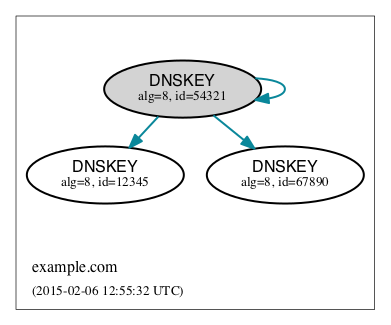 | Just like other RRsets, a DNSKEY RRset is signed as an RRset, which comprises all the collective DNSKEY RRs at the zone apex. Because each DNSKEY RR is represented as a node in DNSViz, a single RRSIG covering the DNSKEY RRset is represented by edges drawn from the node representing the signing DNSKEY to the nodes representing every DNSKEY RR in the set. In the example at the left, the example.com/DNSKEY RRset is comprised of the three DNSKEY nodes shown, and the blue edges going to each of them collectively represent a single RRSIG corresponding to the key with algorithm 8 and key tag 54321. |
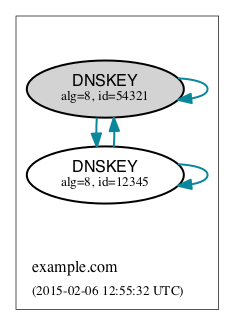 | In some DNSSEC implementations, multiple DNSKEYs sign the DNSKEY RRset, even though only a subset are designated to provide secure entry into the zone (e.g., via matching DS records in the parent zone). While there is nothing inherently wrong with this configuration, graphically representing such scenarios can be visually complex because of the cycles and redundancy created in the graph. |
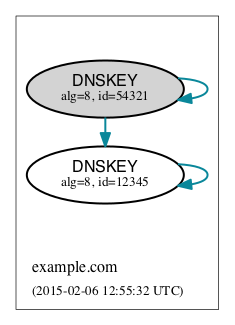 | In order to represent trust propagation in a simplified fashion, eliminating graphic redundancies, DNSViz exhibits the following behavior. For every DNSKEY signing the DNSKEY RRset, a self-directed edge is added to the node, indicating that the DNSKEY is self-signing. Additionally, if the DNSKEY is designated as a (SEP) into the zone, then edges are drawn from its node to nodes representing all other DNSKEY RRs in the DNSKEY RRset. If there is no true SEP, (e.g., no DS RRs in the parent zone), then SEP(s) are inferred based on their signing role (e.g., siging DNSKEY RRset or other RRsets) and properties (e.g., SEP bit). This default RRSIG edge pruning behavior can be disabled in DNSViz, which will show redundant edges if the "Redundant edges" option is selected. |
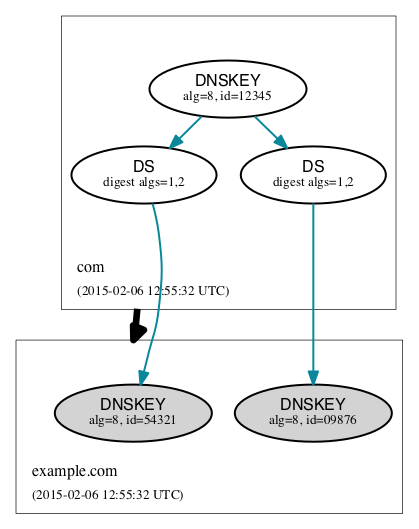 | Like the DNSKEY RRset, a single DS RRset might be represented as several different nodes. As such a single RRSIG covering the DS RRset is represented by edges drawn from the node representing the signing DNSKEY to the nodes representing every DS RR in the set. In the example at the left, the example.com/DS RRset is comprised of both DS nodes shown, and the blue edges going to both of them collectively represent a single RRSIG corresponding to the key with algorithm 8 and key tag 12345. |
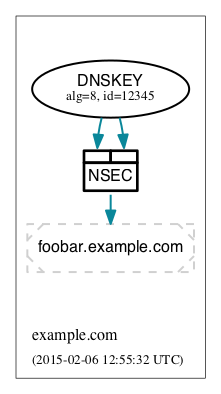 | Because an NSEC or NSEC3 node represents one or more RRsets and at least one RRSIG per RRset is anticipated, multiple RRSIG edges will be drawn from DNSKEY to NSEC or NSEC3 nodes, each pointing to the respective compartment corresponding to the NSEC or NSEC3 record. |
Wildcards
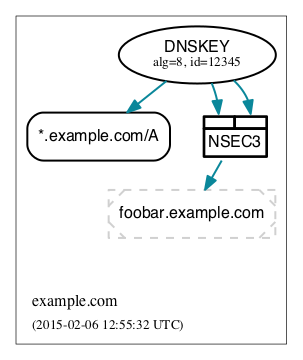 | When the RRSIG covering an RRset has a labels field with value greater than the number of labels in the name, it is indicative that the resulting RRset was formed by a wildcard expansion. The server must additionally include an NSEC or NSEC3 proof that the name to which the wildcard is expanded does not exist. DNSViz represents wildcards by displaying both the wildcard RRset and the NSEC or NSEC3 proof. In the example at the left, the RRset foobar.example.com resulted from the wildcard expansion of *.example.com. |
Node Status
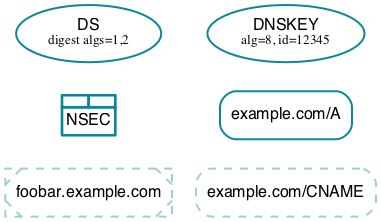 | Beginning at the DNSKEYs designated as trust anchors, DNSViz traverses the nodes and edges in the graph to classify each node as having one of three DNSSEC statuses, depending on the status of the RRset which it represents: secure, bogus, or insecure. In DNSViz, node status is indicated by the color of the nodes (Note that there isn't always a one-to-one mapping between node and RRset, but the node status will be consistent among all nodes comprising an RRset. An example is the DNSKEY nodes for a zone, which all have the same status even though the DNSKEY RRset is split among different nodes). Nodes with blue outline indicate that they are secure, that there is an unbroken chain of trust from anchor to RRset. |
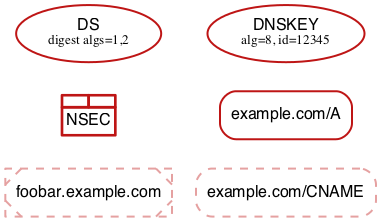 | Nodes with red outline indicate that they are bogus, that the chain of trust from an anchor has been broken. |
 | Because the NSEC and NSEC3 nodes often represent multiple NSEC or NSEC3 RRs, it is possible that a proper subset of the RRs are secure, while others in the set are not (e.g., missing or expired RRSIG). In this case, the outline of the compartments representing secure NSEC or NSEC3 RRs will be colored blue, while the others will be red. Because the status of the collective set of NSEC and NSEC3 RRs is dependent on the status of all the individual NSEC and NSEC3 RRs, the greater node is only colored blue if all the compartments are colored blue. |
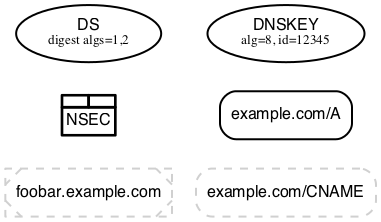 | Nodes with black outline indicate that they are insecure, that no chain of trust exists; if any anchors exist then an insecure delegation is demonstrated to prove that no chain should exist from the anchors. This is equivalent to DNS without DNSSEC. |
Warnings and Errors
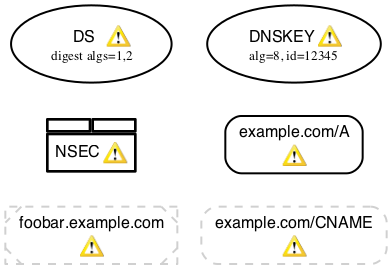 | If one or more warnings are detected with the data represented by a node in the graph, then a warning icon is displayed in the node. |
 | Similarly, the warning icon is displayed alongside edges whose represented data has warnings. |
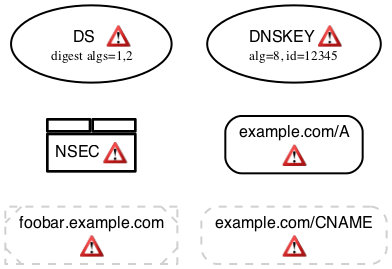 | If one or more errors (more severe than warnings) are detected with the data represented by a node in the graph, then an error icon is displayed in the node. |
 | Similarly, the error icon is displayed alongside edges whose represented data has errors. |
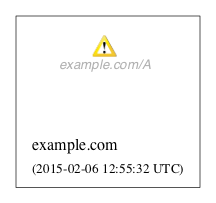 | A warning icon with an italicized label denotes a warning for a response that isn't represented elsewhere in the graph, such as a referral with the authoritative answer flag set. |
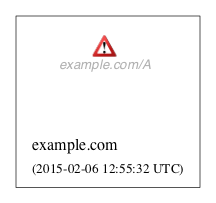 | An error icon with an italicized label denotes a response error, e.g., due to timeout, malformed response, or invalid RCODE. |




